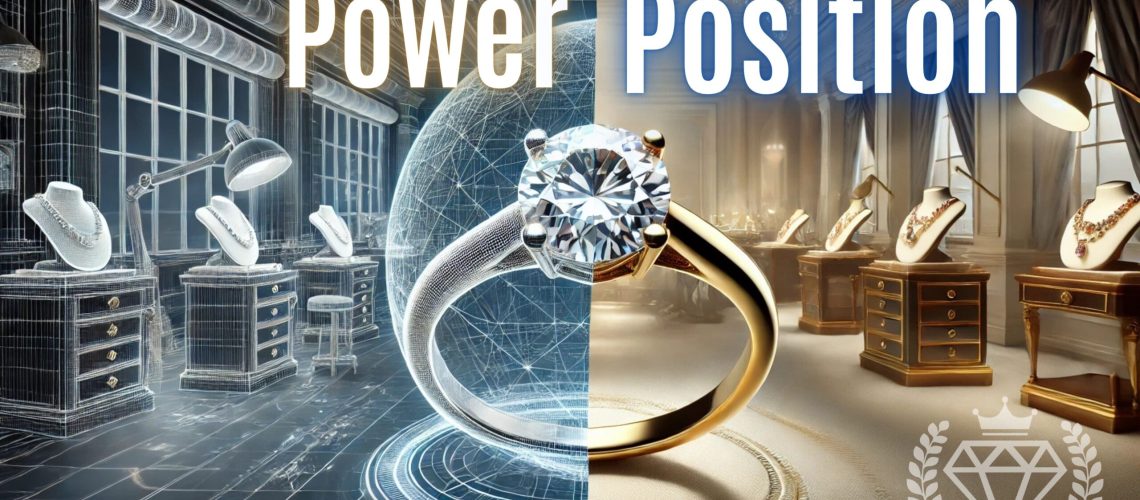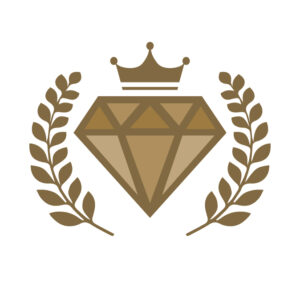The Fear of Replacement by AI
As technology advances at an unprecedented pace, whispers of a future where Generative AI creates flawless, complex 3D models from a single text prompt are causing unease among CAD specialists in the Jewelry Industry.
The dream? AI-generated designs instantly ready for production, eliminating the need for human intervention. The reality? Early versions of these tools are already here, capable of drafting basic concepts with surprising precision. Understandably, this raises concerns about the future of CAD roles in an industry so deeply rooted in artistry and craftsmanship.
But before we dive into despair, let’s take a step back.
The Irreplaceable CAD Specialist
The role of a CAD specialist goes far beyond drafting digital blueprints. These professionals are at the intersection of art, science, and business. Their expertise spans:
Product Design: Crafting unique pieces that align with brand identity and resonate with customer desires.
Sales & Customer Feedback: Translating customer preferences into viable designs, balancing artistry with practicality.
Manufacturing: Ensuring every design meets technical and production standards to avoid costly mistakes.
Financial Implications: Reducing waste, optimizing materials, and ensuring the profitability of each piece.
AI, no matter how advanced, lacks the one critical ingredient: human insight. A CAD specialist assigns meaning to AI outputs, refines raw ideas, and ensures they fit the brand’s vision and customer needs. This human oversight is essential and irreplaceable.
The CAD Specialist as a Strategic Leader
Rather than being disrupted, CAD specialists have the opportunity to evolve into one of the most formidable roles in the jewelry industry. Here’s how:
Brand Development Expertise: By understanding the core principles of brand identity, CAD specialists can ensure every piece they design strengthens the brand’s narrative and creates a cohesive collection.
Storytelling in Design: Jewelry is emotion, encapsulated in metal and stone. Specialists who can craft designs that tell compelling stories will create deeper customer connections and higher perceived value.
Holistic Process Knowledge: Specialists who can bridge the gap between design, manufacturing, and customer service become invaluable. They ensure the piece is not just beautiful but also manufacturable and aligned with the customer’s vision.
With these skills, the CAD specialist moves from being a functional player to a strategic linchpin, directly influencing a company’s success in the market.
A Call to Action for CAD Specialists
The jewelry industry is changing, and so must its professionals. Jeweler’s Advantage’s AI CoPilot is the perfect partner for CAD specialists looking to embrace this evolution. With tools designed to augment your creativity and streamline your workflow, this AI assistant empowers you to:
Enhance your brand storytelling.
Speed up the ideation and design process.
Collaborate more effectively across teams.
You are in a powerful position. Your skills, combined with the right technology, will not only secure your place in the industry but elevate it. Your expertise is the fulcrum on which the jewelry business pivots. Don’t just adapt—lead. Let Jeweler’s Advantage help you achieve your highest potential with AI.
What's up, guys? This is Jesse Korby at Jewelers Advantage, and in today's video, we are going to talk about AI and 3D CAD and how they're going to work together and also how they're going to impact the jewelry industry.
Big day today. So, I had a really good question come my way from somebody that's new to our community. They were asking, "Hey, are you guys going to build an AI that's going to replace CAD designers?" This person was concerned that maybe their career could be disrupted, and that's a fair question in the age of AI.
My response was: I don't think it really works like that, and here's why. It's something that everyone should know. CAD is a very interesting position in the jewelry industry. It was interesting for the past few years when that was a disruption in its own right—that you don't have to carve a wax model; you can create the jewelry in a computer, 3D print it, and then cast it if you know what you're doing.
This is probably the number one feature request that everyone using a Jewelers Advantage AI product has asked for. They want to be able to type in a design and have it become CAD that you could make jewelry with. Everybody seems to think this is going to be some kind of Holy Grail moment that makes everything way easier because they won't have to spend money on CAD anymore. They'll save that cost and be able to immediately make a piece of jewelry.
Not so fast.
What that is going to mean is that if you could type things into a computer and have AI produce an STL file that you could actually print and make jewelry with, it's no longer about just saving that cost and not paying a CAD specialist. That would mean everybody could produce a piece of jewelry—even people with no previous expertise in jewelry. They would be able to stand on the shoulders of AI and have text create their CAD.
So, when this eventually happens—and it will happen—it's going to level the playing field completely. It's going to make it so anyone can make jewelry.
What does that mean for the CAD specialist?
Well, if we truly know how these AI tools work, we know that it's a relationship. The outputs and whatever is produced by the AI don't have any actual meaning or utility unless a human decides it does. We have to decide the meaning and decide how useful it is; otherwise, it's just data on a computer.
So, if that's the truth, there are going to be decisions that have to be made about the supply chain. Who's manufacturing the piece? What are the logistics of getting it from a manufacturer and then shipped to wherever it needs to be? What about QC? How much did the piece cost? What materials were made and why?
If it's custom, did we make the customer happy? If it's a product for an e-commerce store, are we going to achieve product-market fit?
Lots of decisions. Lots of complex, expert decisions to be made at the time of creating the CAD.
Maybe AI would make it come together way, way, way faster. It could handle all the textural edits that need to be made. But you still have to decide: How thick is the back plate going to be? Is there a way to cut some gold weight out of this piece? What is the difference in pricing with different karats? And, of course, gemstones.
That puts the CAD specialist—if we're truly leaning into that specialist name—in a unique position. They could be in a real power position if they know how to make the final manual edits after AI has gotten them 90% of the way there. They can work faster, but they also have expertise on the product side and the manufacturing side.
So, if this person who knows CAD is not just thinking, "How can I trade my time to produce a file on a computer that a business can use?"—that's down here. You've got to think: "How can I design products that the public wants to buy? Or make my customer happy on my e-commerce store? Or fit the identity of my brand and the market segment we're trying to be in?"
If you're in the position of the CAD specialist at that point, you're extremely powerful.
So, it's not just about cutting costs on your line sheet. It's not just about making your small business that does five projects a month a little bit cheaper to run. This is about the real power position that's going to set you off with building a real brand.
So, this is Jesse at Jewelers Advantage. Thank you for tuning in, and we'll see you in the next one.

